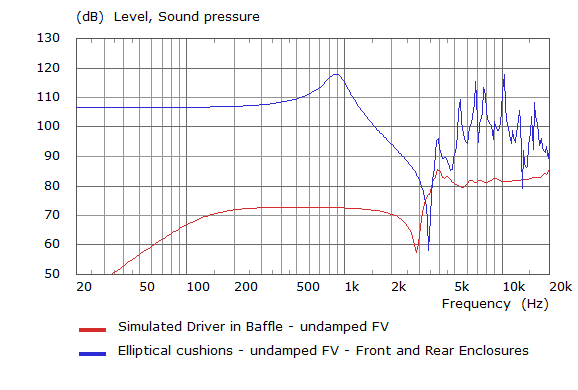Headphone Driver in Baffle vs Module - What Changes?
Below is a graph comparing the fictitious headphone driver without frame vent damping in an infinite baffle with the same driver mounted in a headphone system which is imposed onto a baffle (with an in-plane microphone) to create an enclosed front air volume.

Taking a headphone driver out of context and measuring in a baffle almost appears to provide little information about the performance inside a headphone application. It is however useful to separate out the various performance aspects of the system. For example, in a typical loudspeaker the bass performance is governed by the fundamental resonance of the driver + enclosure below which there is a 12dB/ octave roll off (assuming a sealed enclosure). In headphones, the forward radiation is sampled not within a free-field, but within a theoretically sealed enclosure which means that pressure sampled within this enclosure will remain constant below the fundamental resonance of the driver + enclosure. This fundamental resonance shifts higher into the mid-band (900Hz in the above comparison) and the bass is dependent upon the success of creating a sealed volume between the driver and the ear. This concept is important because our strategy for optimising the bass for example will be very different to conventional loudspeaker design.
The dip in the driver response shifts higher in frequency due to the stiffness of the enclosing air volumes surrounding the driver.
The upper response is very choppy and generally raised in level. This is due to the transition from freely radiating sound waves to a modal scenario within a small enclosed space. The driver itself over this frequency range is reasonably flat despite higher order structural resonance.


